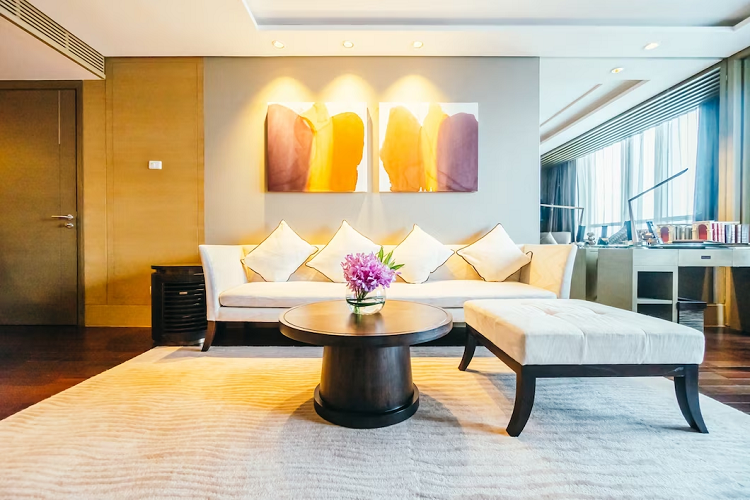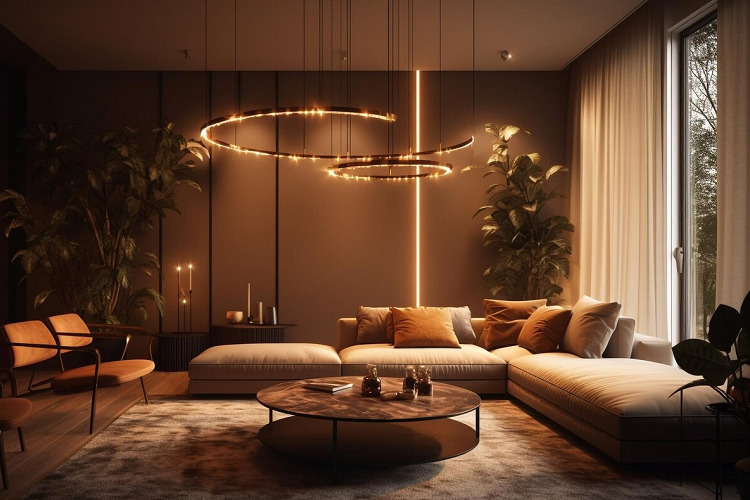Beyond figuring out where your wall switches are, you may not have given much thought to your home’s lighting. However, when it comes to illuminating your living spaces, there’s much more to it than plugging in a lamp and flipping a switch. Here’s what you need to know about the three types of lighting each room in your home should have.
Ambient Lighting

The general source of light in a room is often referred to as ambient lighting. This type of lighting covers the entire space, allowing people to move around comfortably and safely.
Ambient lights are often the first ones you put on when entering a room, so you can see around well enough to avoid bumping into anything. Overhead fixtures, wall sconces, and even well-placed floor lamps can all fit the bill when it comes to providing this primary lighting.
Despite its main purpose, ambient lighting needn’t be purely functional or utilitarian. Beautiful options for hanging, wall-mounted, tabletop, or floor lights are available in a variety of styles. Everything from elegant corbel sconces to vintage chandeliers can light up your space while reflecting your design preferences.
Task Lighting

While ambient lighting can save you from bruising your shins due to bumping into furniture, it often doesn’t provide enough focused light for workspaces. That’s where the second type of lighting, task lighting, comes in.
Most rooms in your house require concentrated light in specific areas. This task-serving lighting helps you avoid eye strain while cooking, reading, or paying bills by targeting brighter light directly to the spots in which you do your work.
As with ambient lighting, this purpose-driven style of illumination can be as attractive as it is useful. From a stately adjustable-arm floor lamp set next to your favorite reading nook to a glass pane kitchen island pendant that hangs over your food prep space, task lighting can be both lovely and enlightening.
Accent Lighting

While ambient and task lighting both serve specific purposes, accent lighting by its nature tends to be either decorative in and of itself or meant to draw attention to other decorative elements in your room. It can be either bright enough to clearly highlight art, antiques, or other collectible pieces, or subtle enough to gently draw the eye to a textured fireplace or exposed ceiling beams.
Once again, there are virtually no limits to the design choices available for accent lighting. You can choose a coastal-inspired table lamp to show off your seashell collection, or a rattan wall sconce to reflect onto your natural fiber wall coverings. Both large and small light fixtures can fill the role of accenting the contents of your living spaces.
After learning about ambient, task, and accent lighting, you’ll probably never take lights for granted again. Whether you’re giving a room an entirely new look or are on the hunt for a simple way to enhance a space in your home, knowing about the three options you have for lighting up a space helps you make the best choices for both illumination and appearance.






